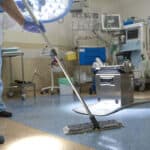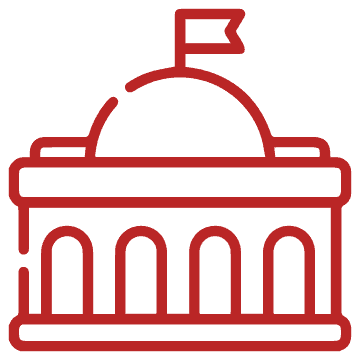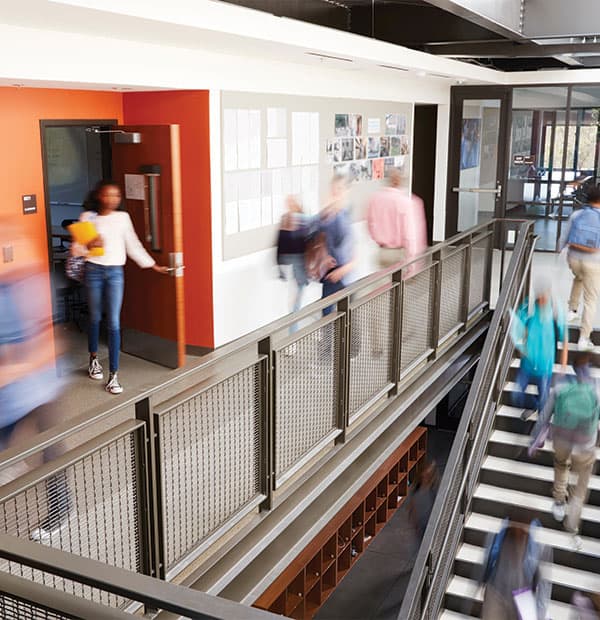
Winter Preparedness Checklist for Industrial Facility Managers
November 22, 2024
The 6 Pillars of a Sustainable Hospital Maintenance Plan
January 9, 2025Student safety and health are paramount concerns for school administrators. While proper school maintenance plays a crucial role, a comprehensive master cleaning schedule emerges as another strategic tool. The good news is that such a school cleaning document has so much more to offer beyond basic health and hygiene protocols.
In this article, we’ll explore the advantages of having a clear and detailed school cleaning plan and provide steps to help you create a master cleaning schedule tailored to your school’s needs.
Why Do You Even Need A School’s Master Cleaning Schedule?
Schools are bustling, high-traffic spaces where thousands of students, teachers, and staff congregate daily, creating opportunities for germs and dirt to accumulate and spread rapidly.
Without a structured and comprehensive school cleaning plan, these “bacteria breeding grounds” can lead to widespread illness, increased absenteeism, and compromised learning environments.
This is where a master cleaning schedule proves invaluable. First, it ensures that every school area — classrooms, restrooms, cafeterias, gymnasiums, and administrative spaces — receives consistent, thorough cleaning and disinfection. On a logistical level, it helps staff prioritize tasks, allocate resources efficiently, and track the completion of cleaning duties. Additionally, it ensures the school complies with health and safety standards, demonstrating a commitment to upholding high standards of cleanliness and care. Lastly, a well-maintained environment promotes student and staff well-being, creating a positive and conducive atmosphere for learning.
What Information Should A Master Cleaning Schedule Contain?
A well-crafted master cleaning schedule is a manifest that sets the standard for maintaining a clean and healthy school environment. Therefore, the master school cleaning schedule must provide detailed, clear information that ensures no task is overlooked, leaving no room for confusion.
The following components are critical to developing a robust and practical master cleaning schedule:
1. The Cleaning Areas (What Needs to Be Cleaned?)
List every area of the school that requires attention, such as classrooms, restrooms, hallways, cafeterias, gymnasiums, libraries, science labs, art rooms, lounges, administrative offices, courts, etc.
2. The Cleaning Frequency (When and How Often to Clean?)
Define the frequency of cleaning tasks for each area or item. For example, daily, weekly, monthly, quarterly, bi-annual, and annual deep cleaning tasks.
3. Cleaning Responsibilities (Who Cleans It?)
Assign tasks to specific individuals or teams based on the required expertise and desired cleanliness level. These individuals could be the janitorial team, classroom teachers, students, or third-party specialized cleaning contractors.
4. Cleaning Methods & Supplies (How to Clean It?)
Provide detailed instructions for each cleaning task, recommend cleaning techniques (if relevant), and list the necessary cleaning supplies.
Following the school cleaning plan is usually more manageable when the information is presented in a visual format, such as a checklist or table. Below is an example of how it all comes together:
Area: Classroom
Frequency: Daily
Responsible Party: Janitorial staff
Items to Clean:
- Desks and chairs (disinfect)
- Whiteboard
- Door handles
- Light switches
- Electronics
- Empty trash cans
Cleaning Supplies:
- Disinfectant spray
- Microfiber cloths
- Broom or vacuum
- Trash bags
Additional Periodic Cleaning:
- Windows: Monthly
- HVAC filters: Quarterly
Getting Started with Developing A School’s Master Cleaning Schedule
While cleaning practices are usually pretty standard, each school’s cleaning approach differs based on the school’s unique characteristics (location, number of students and staff members, existing facilities, etc.). With that in mind, developing a comprehensive master cleaning schedule for your school begins with careful planning and evaluation.
To start, ask yourself these critical questions:
- What is the school’s size and layout? Understanding the scale and configuration of the school will help in planning how to allocate resources and time for each area. A large high school with multiple wings will have different cleaning needs vs. a small elementary school with a more compact layout.
- How many occupants? Knowing the number of students, teachers, and staff helps gauge the intensity of cleaning required. Higher occupancy means increased wear and tear, more frequent cleaning requirements, and potentially more complex cleaning schedules.
- What are the occupancy trends? Identify peak usage times for different areas, such as cafeterias during lunch hours or gymnasiums during sports events. Also, consider times when the school is busier vs. holidays or extended vacations.
- What types of areas and surfaces require cleaning? Different spaces, such as classrooms, restrooms, and labs, have varying cleaning requirements based on usage and surface types.
- What is your cleaning resource availability? That includes cleaning staff and their working hours, cleaning supply stocks, cleaning supply budget, and the need for professional school cleaning services.
By answering these questions, you’ll be better positioned to strategically create a master school cleaning document tailored to your school’s unique requirements. This process will help you identify high-priority areas based on traffic and usage, determine the appropriate frequency for cleaning tasks, and focus efforts on high-traffic and high-touch areas that are most prone to germs and dirt accumulation. Additionally, you can develop a structured cleaning routine to ensure consistent and thorough coverage of all spaces and allocate cleaning responsibilities to specific staff members, promoting accountability and efficiency.
Let Your School Shine
Maintaining a clean classroom environment is crucial to helping students develop good habits. Beyond physical health, a pristine school setting profoundly impacts mental well-being. In fact, 90% of teachers report a noticeable improvement in their mental health when working in a clean, organized space, underscoring the powerful connection between a well-maintained environment and overall workplace satisfaction.
When it comes to professional school cleaning services, US&S is a trusted janitorial cleaning service provider with a proven track record of excellence, as reflected in our prestigious CIMS-GB certification from the International Sanitary Supply Association (ISSA).
If you’re looking to elevate your school’s cleanliness and create an environment that truly shines, please explore our janitorial services. Our team is dedicated to delivering superior cleaning solutions tailored to your school’s unique needs, ensuring a spotless and safe environment for all. Contact us to learn more and discover how US&S can support your school’s mission for a healthier, cleaner future.














